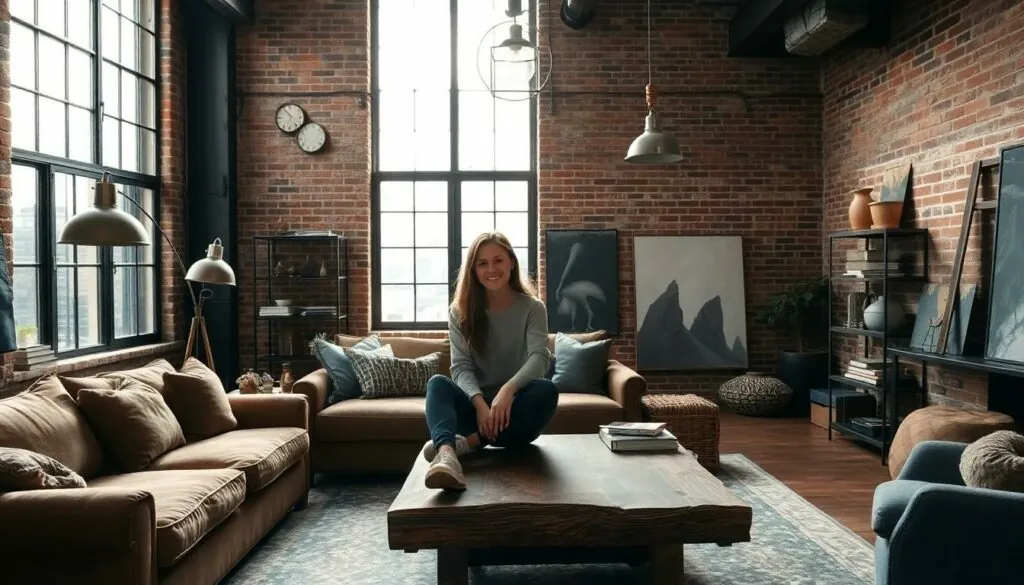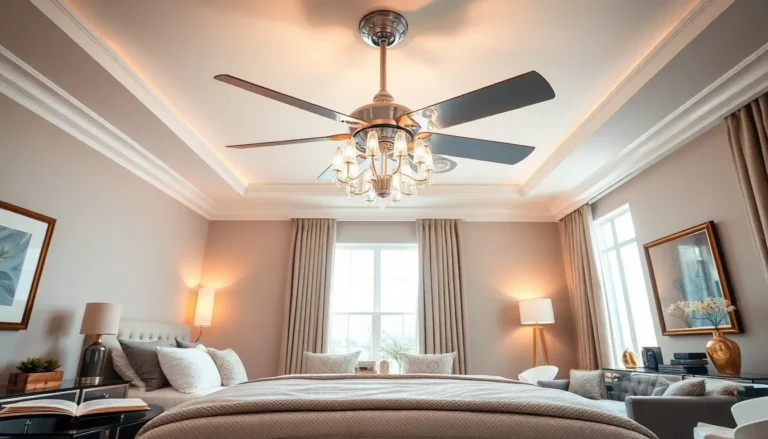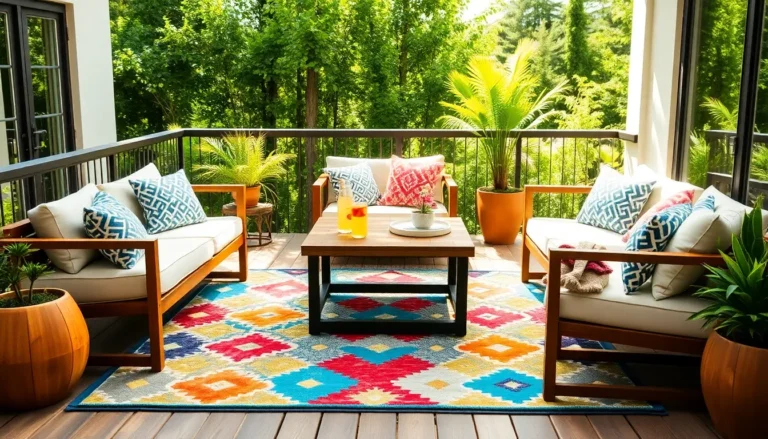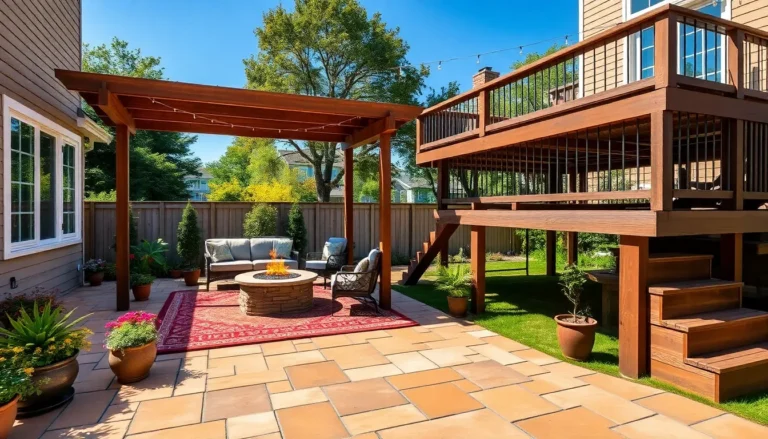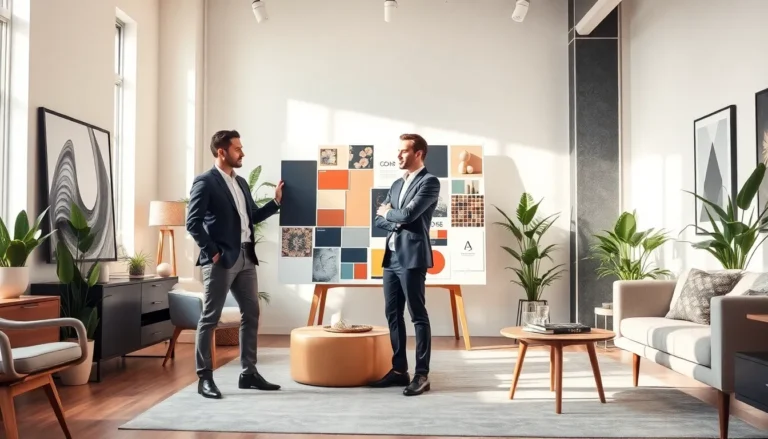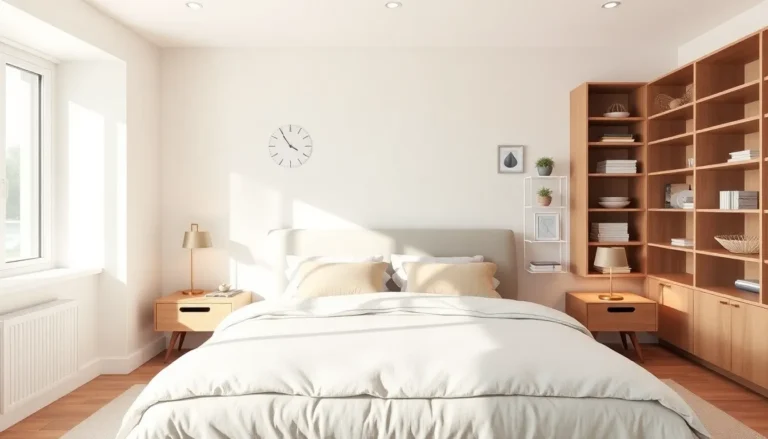Table of Contents
ToggleIndustrial home design isn’t just a trend; it’s a lifestyle choice that screams personality. Imagine living in a space where exposed brick, steel beams, and reclaimed wood come together to create a unique blend of raw elegance. It’s the perfect marriage of function and flair, making every corner of your home a conversation starter—even if the only guest is your cat.
Overview of Industrial Home Design
Industrial home design combines raw materials with minimalistic aesthetics. Exposed brick walls, steel beams, and reclaimed wood often define these spaces. Large windows and open layouts create an airy environment, incorporating natural light. This design style embraces functionality alongside style, allowing for a blend of comfort and character.
Color palettes typically reflect earthy tones with dark shades. Grays, browns, and blacks complement the industrial themes. Mismatched furniture and unique lighting fixtures serve as focal points, adding personality. Often, designers emphasize the use of vintage or upcycled elements, reinforcing sustainability.
Textures play a significant role in industrial design. Mixing concrete, metal, and wood creates a multidimensional look. Furnishing choices, ranging from leather sofas to rustic wooden tables, enhance this tactile experience. Accessories like metal shelving and large art pieces personalize the space while maintaining the industrial feel.
In addition, industrial home design caters to varying lifestyles. Many owners prefer open concept living that facilitates social gatherings. Home offices or creative studios integrate well within this framework. Spaces designed this way invite versatility, accommodating everything from dining to working.
Maintenance remains straightforward due to the durable materials used. Sturdy surfaces resist wear better than traditional finishes. Long-lasting elements contribute to a sense of permanence, appealing to individuals who favor lasting beauty in their homes.
Community and character often emerge in industrial neighborhoods. Historic buildings converted into lofts or apartments feature authentic design elements, creating unique living experiences. This lifestyle choice not only reflects personal taste but also a connection to the surrounding environment.
Key Elements of Industrial Home Design
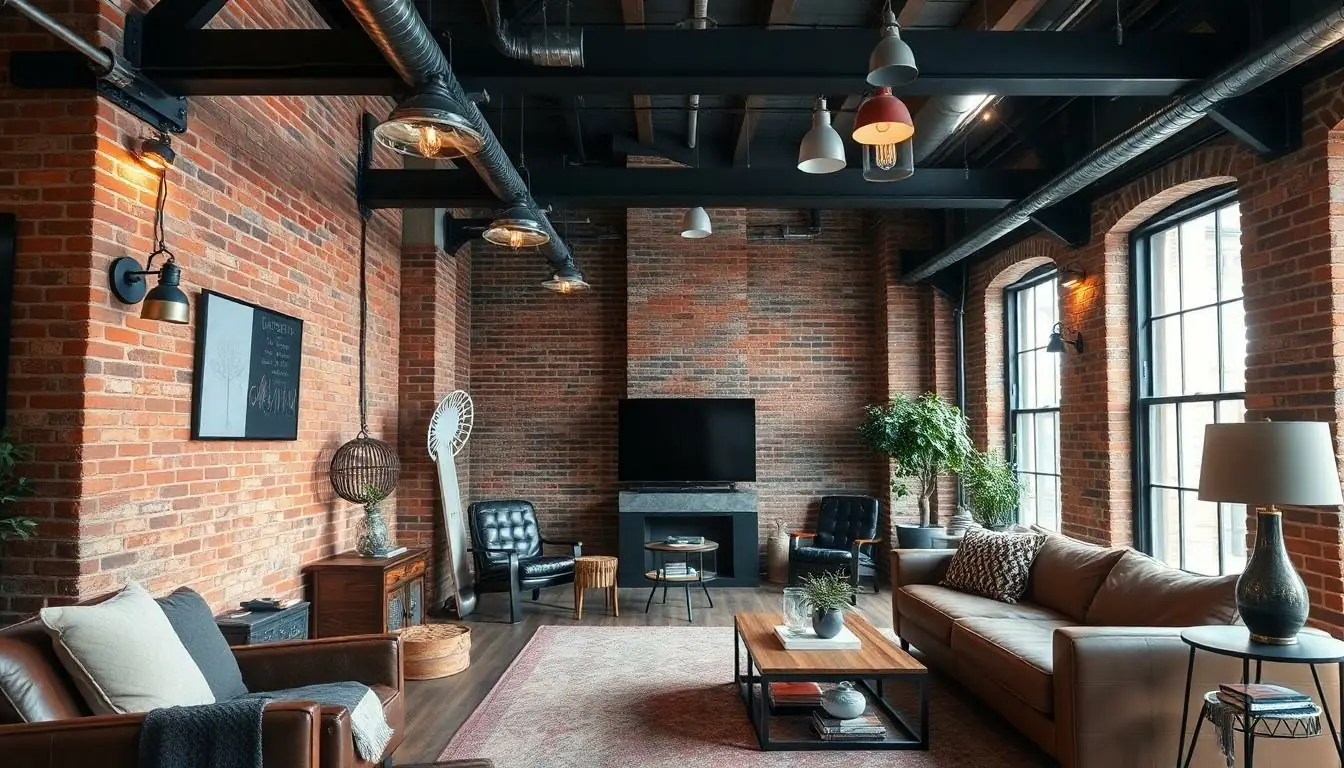
Industrial home design showcases distinctive features that emphasize functionality and raw beauty. This style integrates various elements, making it a compelling choice for modern living.
Materials Used
Exposed brick provides character, creating an authentic ambiance. Steel beams add structural integrity and a sense of industrial heritage. Reclaimed wood often appears in furniture and flooring, enhancing warmth and sustainability. Concrete surfaces contribute to an urban feel, while metal fixtures, such as light bulbs and hardware, reinforce the industrial aesthetic. Each material embodies durability, ensuring that spaces remain resilient over time. These choices contribute to a cohesive atmosphere that balances modern minimalism with rustic charm.
Color Palette
Earthy tones dominate industrial color palettes, creating a grounded environment. Shades of gray, brown, and black provide a neutral backdrop that allows other elements to shine. Accent colors, such as deep greens or burnt oranges, can introduce vibrancy without overwhelming the space. This balance fosters a relaxed and inviting atmosphere. Darker hues in larger spaces enhance the dramatic effect, while lighter tones in smaller areas maintain openness. Textured materials also influence color perception, elevating the overall design experience.
Popular Industrial Home Design Styles
Industrial home design features various styles that showcase raw materials and minimalistic aesthetics. Two prominent styles are Loft Style and Minimalist Industrial.
Loft Style
Loft style exemplifies the integration of spaciousness with industrial elements. High ceilings enhance the feeling of openness, while large windows maximize natural light. Exposed brick walls and steel beams create an authentic industrial vibe. Often, the layout remains open, promoting flow between living, dining, and kitchen areas. This style encourages the use of reclaimed materials, emphasizing sustainability and character. Mismatched furniture adds a personal touch, allowing for creativity in design. Color palettes typically include earthy tones balanced with deeper shades. Accessories such as large art pieces or vintage fixtures complete the look and add personality to the space.
Minimalist Industrial
Minimalist industrial combines simplicity with industrial flair. Clean lines define this style, focusing on functionality without excessive decoration. The use of neutral colors emphasizes a serene atmosphere, often incorporating whites, grays, and blacks. Concrete floors and metal accents provide an urban touch, while natural materials like wood introduce warmth. Furniture remains sparse yet functional, prioritizing utility over ornamentation. Lighting plays a crucial role, with fixtures designed to highlight the space without overpowering it. This style suits individuals seeking a refined aesthetic, marrying practicality with an industrial edge.
Benefits of Industrial Home Design
Industrial home design offers numerous advantages, appealing to a diverse range of homeowners. One key benefit stems from the use of durable materials like concrete and metal. These elements not only enhance longevity but also require minimal maintenance compared to traditional finishes.
Another significant benefit is the spaciousness created by open layouts. High ceilings and large windows contribute to airy environments filled with natural light. Such spaces promote a calming atmosphere and facilitate social gatherings, making them ideal for entertaining.
Unique aesthetic qualities further attract individuals to this style. The combination of raw materials and earthy color palettes creates a visually striking environment that feels both modern and timeless. Reclaimed wood, exposed brick, and steel beams add warmth and character, allowing for personal expression in home decor.
Flexibility represents an additional advantage. This design style accommodates various lifestyles, easily integrating home offices or creative spaces. By promoting open floor plans, it encourages fluidity between living areas, meeting the needs of families or professionals alike.
Cost-effectiveness also plays a role. Many industrial materials, like reclaimed wood and repurposed fixtures, can be more affordable than traditional building materials. This aspect enables homeowners to maintain a stylish aesthetic without overspending.
Lastly, residing in industrial neighborhoods offers a unique connection to history. Many homes exist in converted factories or warehouses, providing an enriched living experience. This fusion of past and present fosters a deeper appreciation for one’s surroundings, appealing to those who value individuality in home design.
Tips for Incorporating Industrial Design at Home
Incorporating industrial design at home starts with choosing the right materials. Exposed brick walls enhance texture and authenticity, establishing a true industrial vibe. Selecting metal accents brings in a touch of modernity and durability. Using reclaimed wood for furniture adds warmth and character to space.
Space layout plays a vital role in achieving an industrial aesthetic. Opt for open floor plans to create a sense of spaciousness and flow. High ceilings often complement this design style, allowing light to permeate the area. Ensure large windows maximize natural light, further enhancing the airy environment.
Color palette choice significantly influences the overall feel. Favor earthy tones and darker shades to create a grounded atmosphere. An accent color can energize the space, but subtlety maintains balance. Combining mismatched furniture fosters individuality while ensuring comfort.
Lighting fixtures contribute immensely to industrial design. Choose unique pieces, such as vintage lamps or pendant lights, to serve as focal points. Incorporating large art pieces adds personality and draws attention without overwhelming the design.
Textures are essential in forming a multidimensional look. Mixing concrete, metal, and wood creates visual interest and depth. Accessories like metal shelving items provide functionality while amplifying the industrial essence.
Flexibility is another advantage of industrial design. This style easily accommodates diverse lifestyles, integrating areas for work or creativity within the home. Choosing durable materials ensures longevity, minimizing maintenance efforts.
Industrial home design offers a unique blend of style and functionality that resonates with many homeowners. Its emphasis on raw materials and open spaces creates an inviting atmosphere that fosters creativity and social interaction. By incorporating elements like exposed brick and metal accents, individuals can personalize their living spaces while enjoying the durability that comes with these materials.
The versatility of industrial design allows it to adapt to various lifestyles and preferences. Whether embracing a minimalist approach or a more eclectic style, homeowners can find joy in the distinctive character that industrial elements bring to their homes. This design choice not only enhances aesthetics but also promotes sustainability and longevity, making it a practical and enriching option for modern living.

